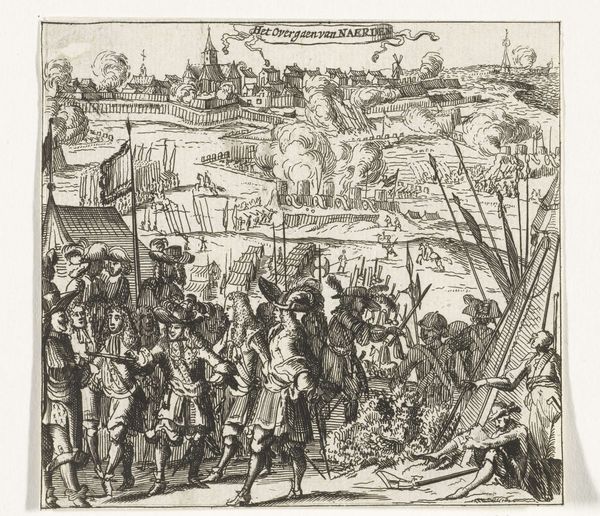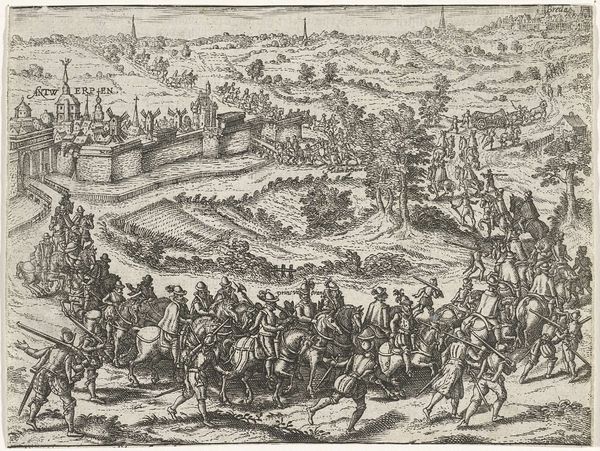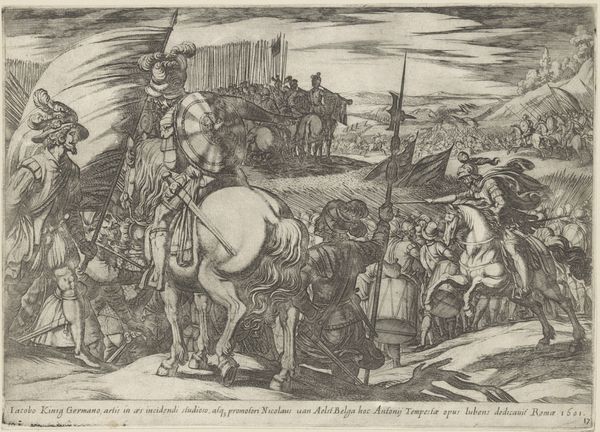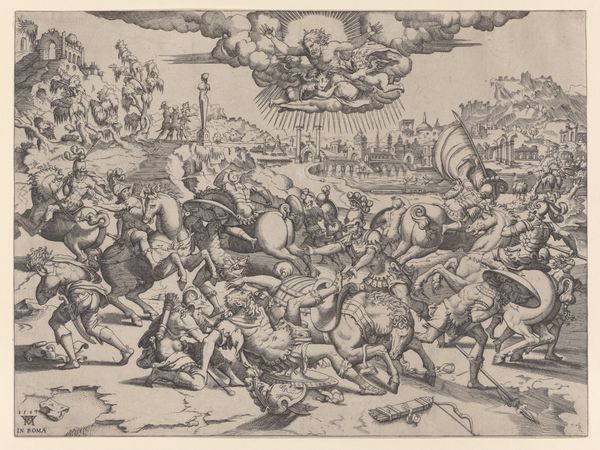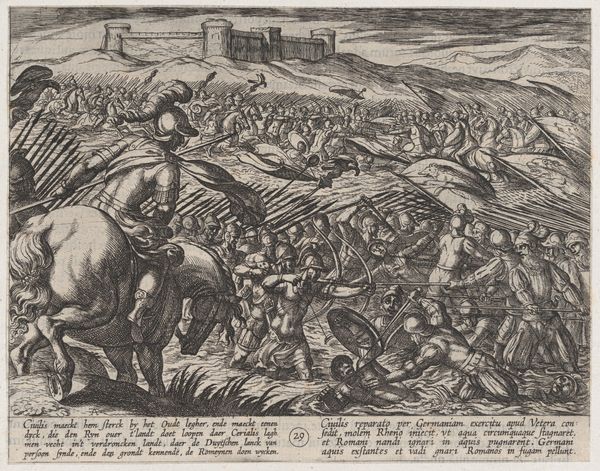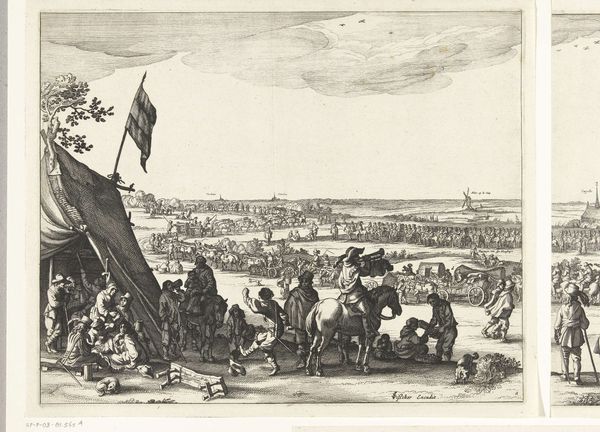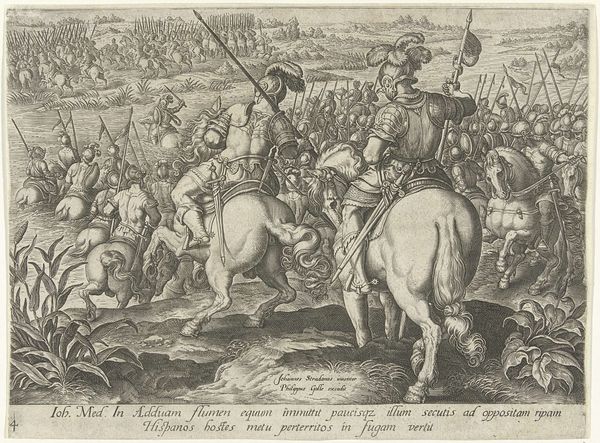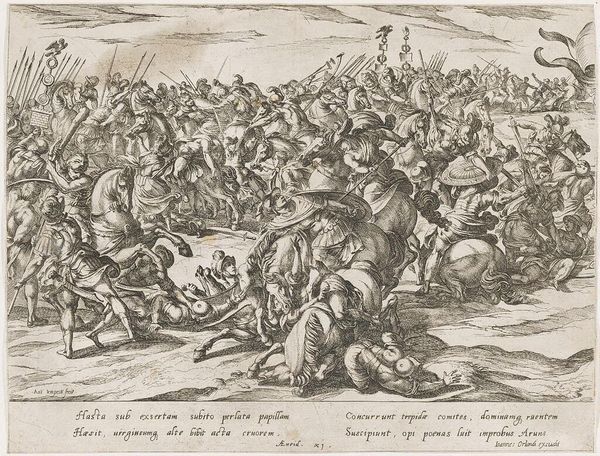
print, ink, engraving
#
narrative-art
#
baroque
#
pen drawing
#
mechanical pen drawing
# print
#
pen illustration
#
pen sketch
#
figuration
#
ink
#
ink drawing experimentation
#
line
#
history-painting
#
engraving
Dimensions: height 104 mm, width 138 mm
Copyright: Rijks Museum: Open Domain
Curator: This print, titled "Slag van Lekkerbeetje, 1600," likely created sometime in the 17th century, depicts a historical battle scene. Its origins remain with an anonymous artist, though its presence here at the Rijksmuseum offers significant insight into early modern Dutch history illustration. Editor: The chaos is palpable, even in this monochrome rendering. It looks less like a glorious clash and more like an utter mess, with fallen figures and horses tumbling everywhere. The effect is more anxiety-inducing than celebratory, certainly. Curator: Indeed. The formal structure, densely packed with figures, contributes to that sense of frenetic energy. Notice the diagonal thrust of the composition, how the artist utilizes line work to suggest movement and depth, drawing the eye towards the distant city skyline? It employs baroque aesthetics. Editor: Speaking of line work, I am intrigued by the printmaking process that enabled dissemination of these scenes to a wide audience. One wonders what paper types were being produced at that moment, and what pigments made up the ink. Were different batches of this printed image altered based on materials? Curator: It’s a curious line of inquiry. But focus for a moment on the figuration here. Look at the meticulous detail in rendering the soldiers' armor, the precise articulation of each horse’s musculature, and what this might tell us. This devotion to the external manifestation of war gestures to the time's particular investment in the pageantry surrounding such moments, obscuring the realities in favor of visual spectacle. Editor: I see a fascinating tension in this. This kind of engraving provided, on one hand, relatively cheap and replicable access to narratives surrounding conflicts. On the other, labor divisions in workshops where specialized artisans reproduced images suggest that the so-called master’s vision was collectively produced through different engravers mastering very distinct skills. It becomes challenging to read these images as manifestations of individual talent. Curator: That's a persuasive point, underlining that this print isn't just about recording an event, but a calculated orchestration of images to influence opinion and uphold a particular narrative, embedded with socio-historical contexts. Editor: And understanding the historical context within material practices offers, indeed, invaluable tools. This helps us understand how seemingly ubiquitous historical prints shaped perspectives regarding events from long ago.
Comments
No comments
Be the first to comment and join the conversation on the ultimate creative platform.
